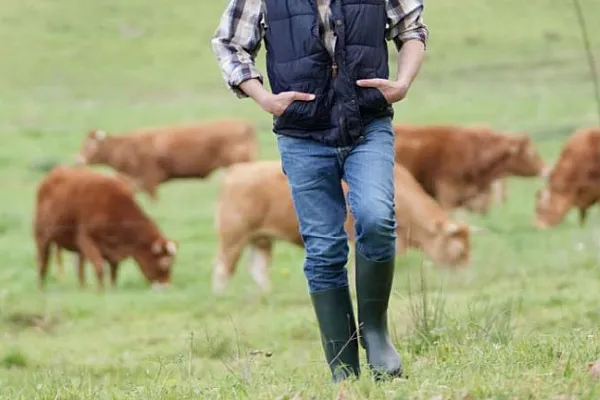
Report: Gender and the Soil Science Society of America
Report: Gender and the Soil Science Society of America
The SSSA Board of Directors appointed a Representation and Recognition Task Force to evaluate gender demographics across a broad spectrum of programs and leadership within the Society. The Task Force was also asked to provide recommendations to ensure gender equity. The report to the SSSA Board of Directors can be found here. In addition, the committee has conducted an analysis of ethnicity in SSSA and has develop a report that was presented to the SSSA Board of Directors.
The following is a snapshot of gender within SSSA at different points of time for comparison. The long-term goal is to provide demographic information in real-time. While that is in the works for the future, the below is a static view.
Total membership in SSSA reached a high of 6,910 members in 2014 and has declined to 5,950 members in 2019.
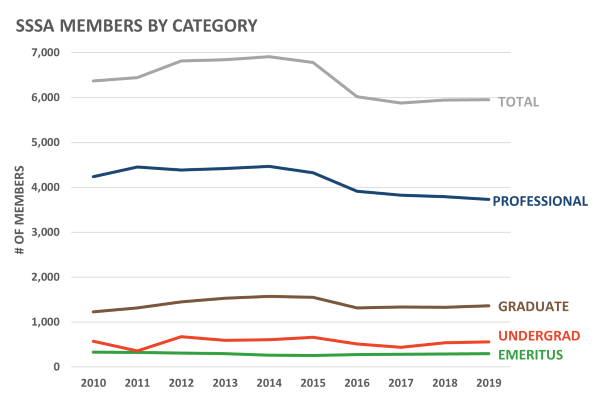
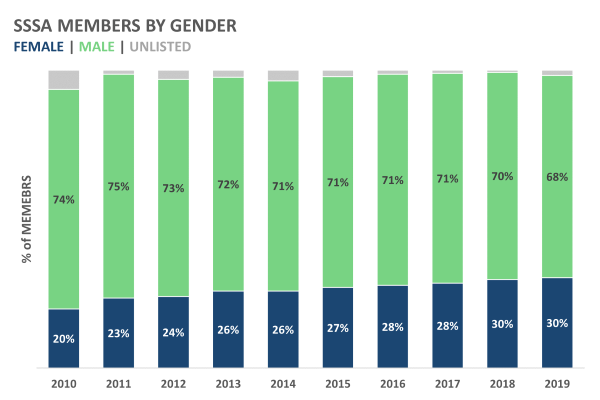
Membership Numbers
- The gender of SSSA members has changed in recent years. Since 2010 the percentage of members who are female has increased from 20% to 30%. While the representation of women among our more senior members is well below expectations based on the historic gender distribution of advanced degree holders, the proportion of women in soil science and number of women who are professional and student members in SSSA has increased. The total number of women members has steadily increased over time across all membership categories since 2010. By comparison, professional membership for men has declined 6% in the same period.
- Growing numbers of women among professional and student members attend SSSA meetings, participate in SSSA governance and serve on many of the standing committees and editorial positions, commensurate with the gender distribution within the membership. This is a positive trend which SSSA needs to cultivate.
Membership, Member Category, and Gender
- Women have greater representation among student members (51 and 43% of all undergraduate and graduate students, respectively) than among the professional members (25%).
- Students represent 32% of our total membership. The number of student members who are male has increased (+17%) at a slower rate than that of female student members (+19%).
- Student membership represents the largest growth area for SSSA over the last 10 years, especially for women.
- The gender distribution of student members closely approximates that for the national average of higher degree recipients in STEM (NSF, ~42%), and is somewhat lower than the percentage of women obtaining advanced degrees in soil science (54% of MS and 53% of PhDs in 2017, Vaughan et al 2019; 46% of SSSA thesis submissions between 2015-2019).
- View Member Category Statistics
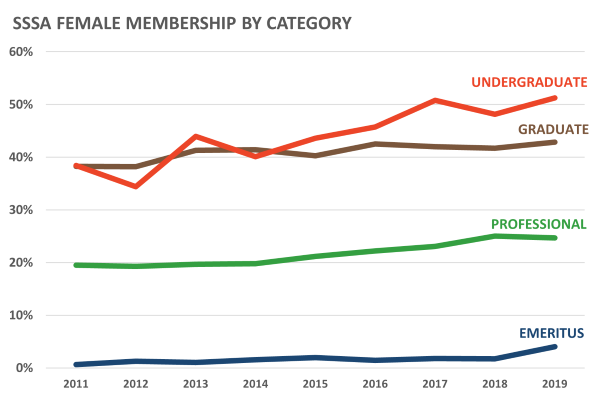
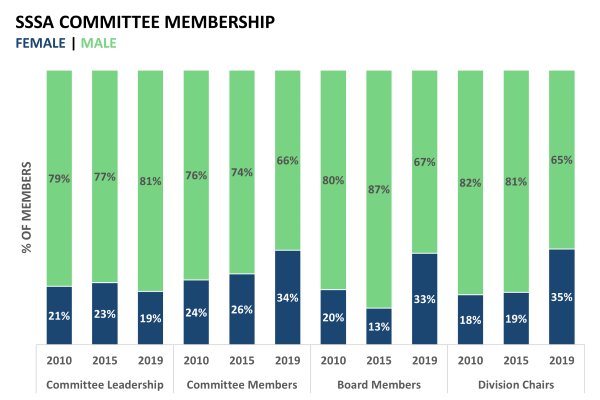
Governance and Gender
- Approximately 34% of SSSA's standing committees are composed of women (professional and student) and women held 19% of SSSA's standing committee chair positions.
- This suggests that while women participate in Society service at higher rates than their membership representation (~30%), their status as committee chairs is lower.
- The relative proportion of female Division Chairs has increased over the years from 18% in 2010 to 35% in 2019. This closely reflects the changing gender composition of the professional membership (20% in 2010 and 30% in 2019).
- Female board member composition has increased from 20% in 2010 to 33% in 2019.
- Women remain underrepresented in executive leadership of SSSA. Notably, only two SSSA Presidents have been women in 2005 and 2015.
NOTE: Gender Composition of committees does NOT include awards, fellows, editorial and elected positions; for ACS committees, only the SSSA appointments are included in these data.
Awards and Gender
- There has been a pronounced upswing since 2010 (when there were none) in the percentage of females who received the Fellow designation.
- In contrast to the Fellows, women have been noticeably underrepresented among SSSA award recipients, with only 10% of all SSSA awards bestowed since 2010 going to women, although it has increased to 20% in the last several years. Most of these Awards have been in recognition of mentoring and/or educational activities, rather than scientific achievement.
- In 2019, 31% of Fellows Selection Committee members and 25% of other Award Committees were women. Thus, representation of women on the Fellows Awards Committees is in line with SSSA membership numbers but is lower for other Awards Committees.
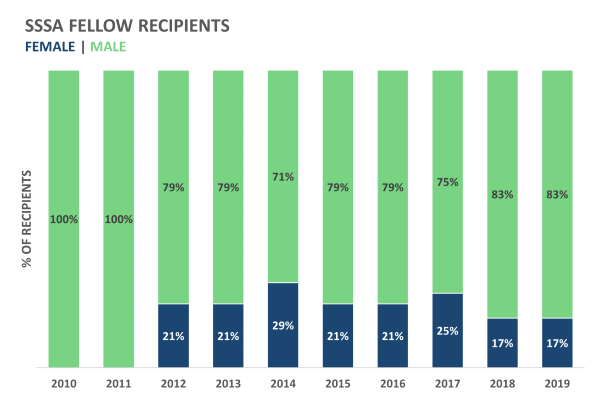
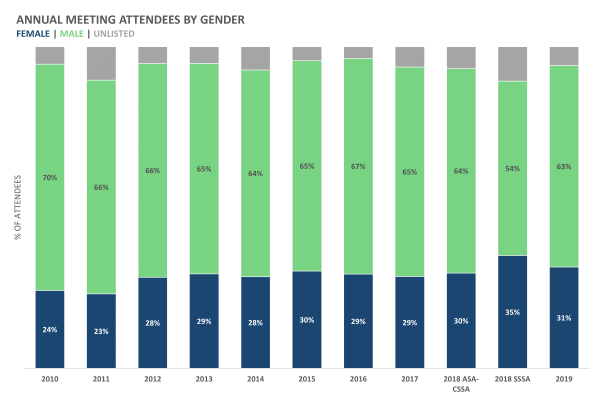
Annual Meeting Attendance
- Relative meeting attendance by women has increased from 2006 to 2018, likely reflecting changes in membership demographics over time. The percentage of women attending SSSA meetings in 2019 was approximately 31%.
- At the 2019 San Antonio meeting 41% of the graduate student attendees and 50% of the undergraduate student attendees were women, closely reflecting demographics of student members (43% of graduate student and 51% of undergraduate student members are women).
- This indicates that students (and women) are participating in the discipline, not only through membership in SSSA, but also as participants in and presenters at the Annual Meetings.
Annual Meeting Speakers
Women constitute 33% of Invited Speakers at symposia, named lecturers and keynote speakers. The representation of women is greater than the current gender distribution of the professional membership.
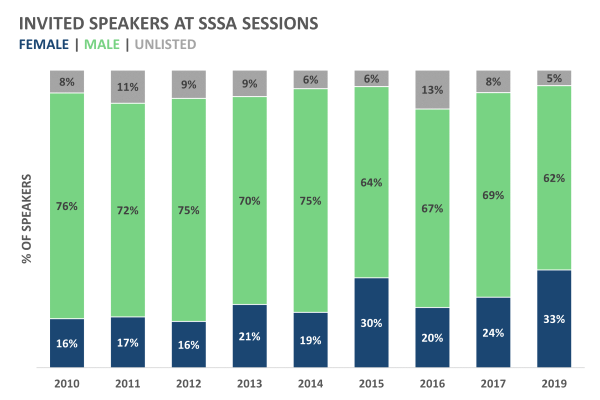
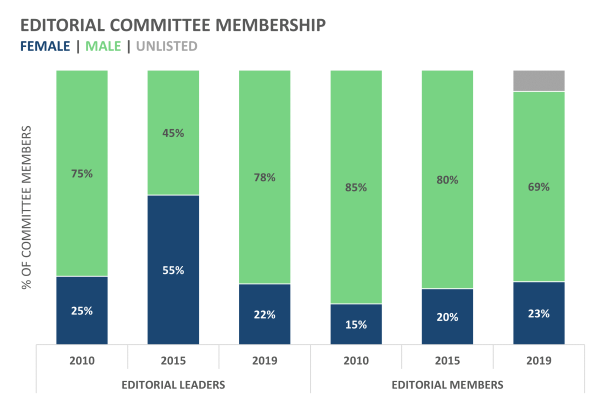
Editorial Representation
SSSA publishes the Soil Science Society of America Journal (SSSAJ) and Vadose Zone Journal and co-publishes the Journal of Environmental Quality and the Agricultural and Environmental Letters Journal.
- Within the Editorial Boards, 23% of Associate Editors and 23% of Technical Editors are female.
- This indicates that within the professional member category, women (25%) are closely represented in the editorial process.
- The most recent past Editor is female and is the only female to have served in this role.
- A partial explanation is that Editors are usually chosen based on experience and years in service post-PhD.
- The selection process for AEs is based on the recommendation of TEs. Thus, it is important for scientists, whether men or women, to establish a presence in the review process as a stepping-stone to later appointment as Associate Editor.
SSSAJ Reviewers
SSSAJ Reviewer data back to 2015 shows that female participation has slightly declined from 16% to 14%.
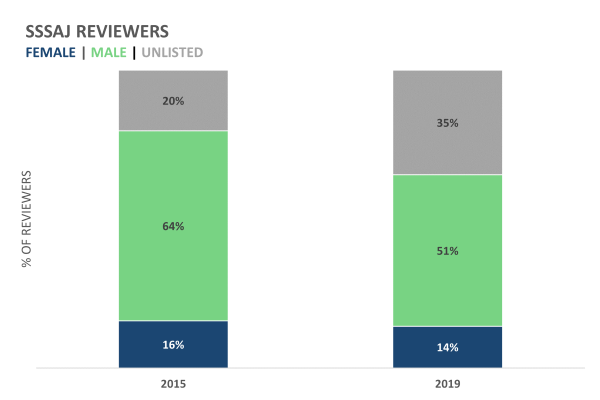
Wrap-Up
The work of the SSSA Recognition and Representation Task Force is to understand and provide recommendations to ensure gender parity across the Society. This report will be updated by the Task Force.